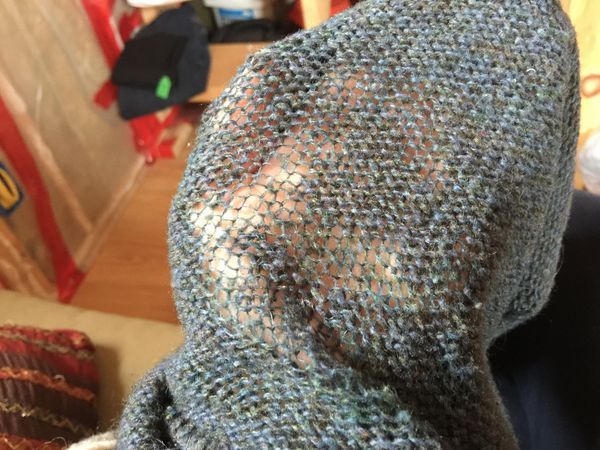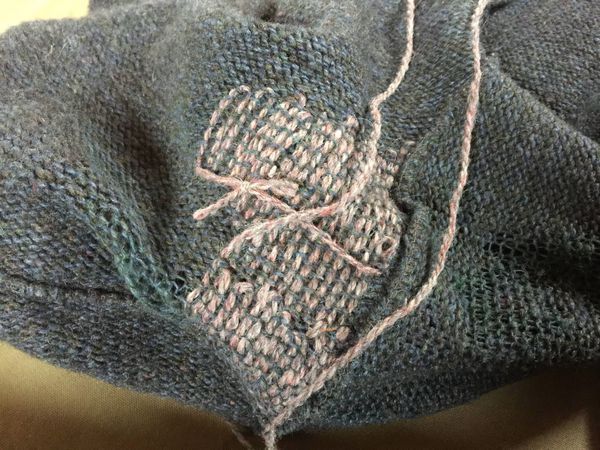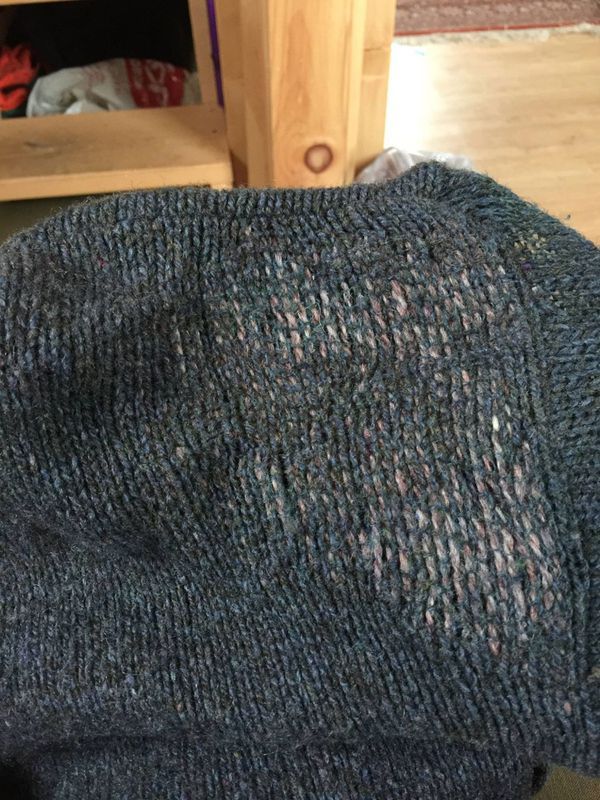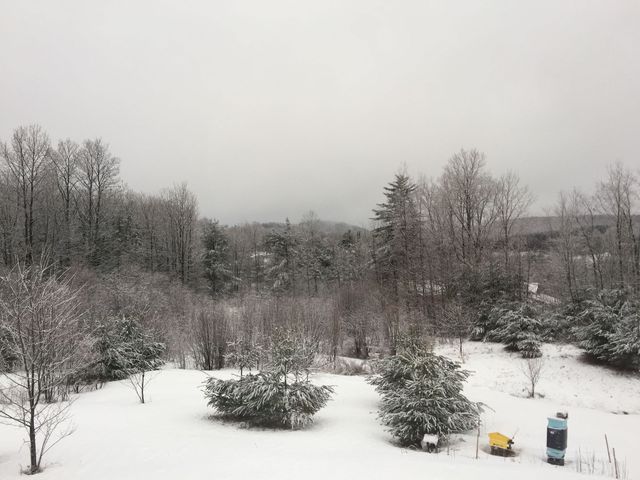/d3ctw1a5413a3o.cloudfront.net/content/902368/a5c8ff402fd8371f-blob.jpeg)
After my first series, I realized how much I liked its sequential format. It allowed me to not rush through describing our daily homesteading life. We do so much on a monthly basis, it would be easy for me to get lost in the details, rushing through as fast as I can through what I want to say. This is a monthly/seasonal newsletter of what we have been doing, on our 50 acres of beautiful Vermont, without rushing through it, giving you a piece of our homestead at a normal pace.
Writing about winter on a Vermont homestead in May might scream ‘procrastination’. I have been waiting patiently to write about our second winter on our homestead, for the snow to melt, waiting for the winter chapter to close. With snow on my car a couple of mornings ago, and a soup on the woodstove still bubbling, I don’t know if it will ever happen.
Winter this year has been harder and seemed longer than usual. In January, we discovered we were pregnant. We were on the fence for years, not knowing where we would plant roots. Having finally found our community and our land, and our son thriving on the homestead so much so that we thought it would be a shame not to share this with another child, we were ready to bring another child into our life. After 6 years, I forgot how tiring growing another human being is. Our daily chores, from cutting wood to gathering water for the day, left me completely exhausted. Doing anything else other than the bare necessities was out of the question. And yet, I look back at our winter in my journal and daily pictures, and we still moved forward with our projects.
Ice
As mentioned in the first series, we don’t have a fridge, but we make do with an ice box. After 2 years, it’s still working well enough that we kept our focus on other priorities.
We took advantage of some very cold nights to make some ice for the fridge. Big blocks like these keep through a few warm days. Eventually, we’ll want a way to make a lot more ice and a place to keep it underground, the hope it that it would keep through the summer. We will also add a root cellar sometime in the next 5 years to preserve our harvests.
/d3ctw1a5413a3o.cloudfront.net/content/902368/6df124c97685c919-blob.jpeg)
Maple Syrup
My husband did the bulk of the work this year. I was gone for the first part, and taking two naps a day for the second part. Let’s give credit where credit is due, husband has been amazing this winter by taking over my chores.
We started tapping the trees in mid-february. Based on a UVM study, we tend to prefer tapping early even with the chance of cold snaps as winter and spring figure out who the new boss is. Essentially from what I gather, you can’t tap too early but you can tap too late. I also really like the taste of early flow and the season is spread out in more manageable chunks of labor.
This sled is proving to be invaluable
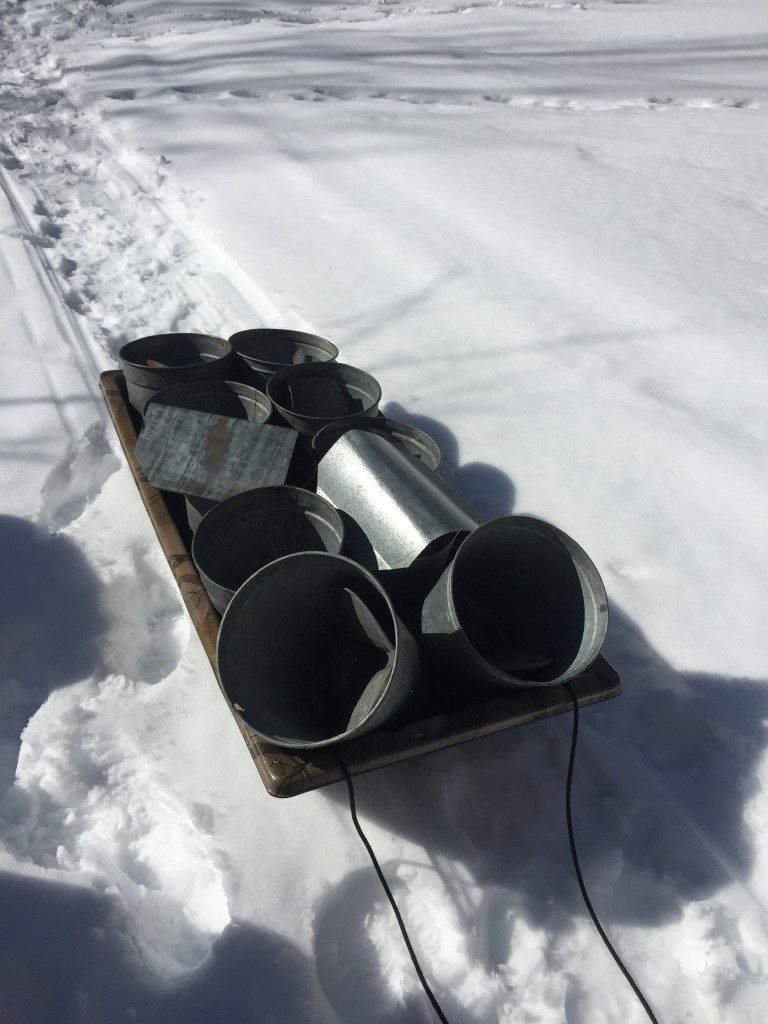
I was traveling but the neighbors were there to help
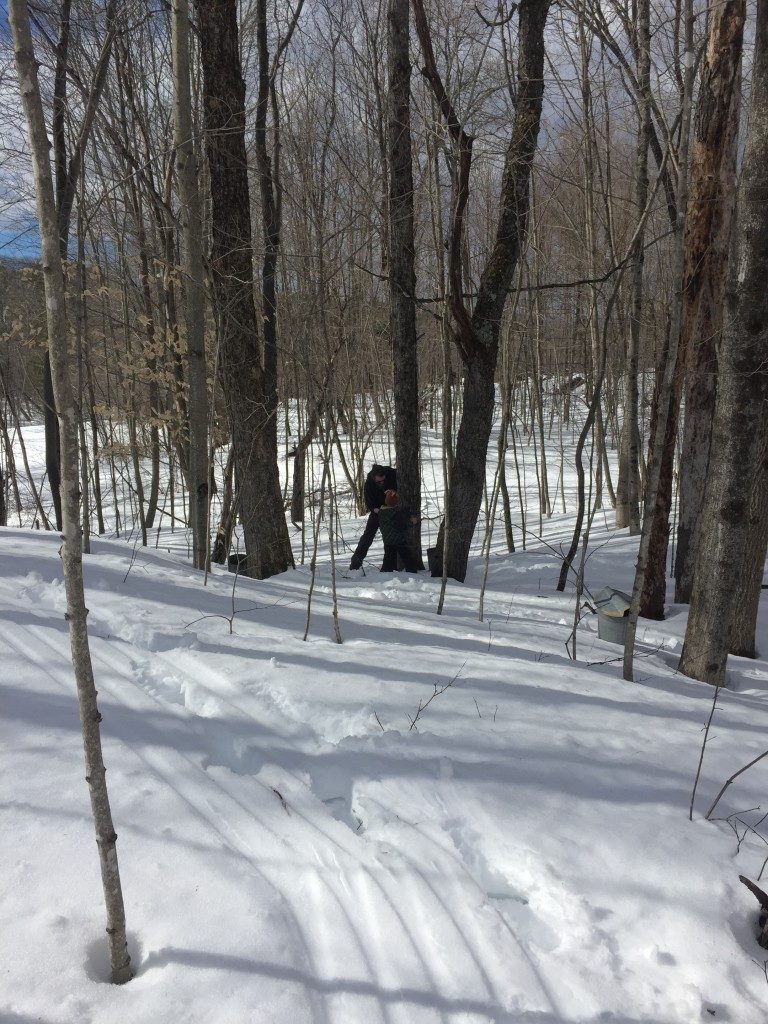
Cleaning the tanks and buckets takes a long while, it’s amazing we did it last year without a well for water.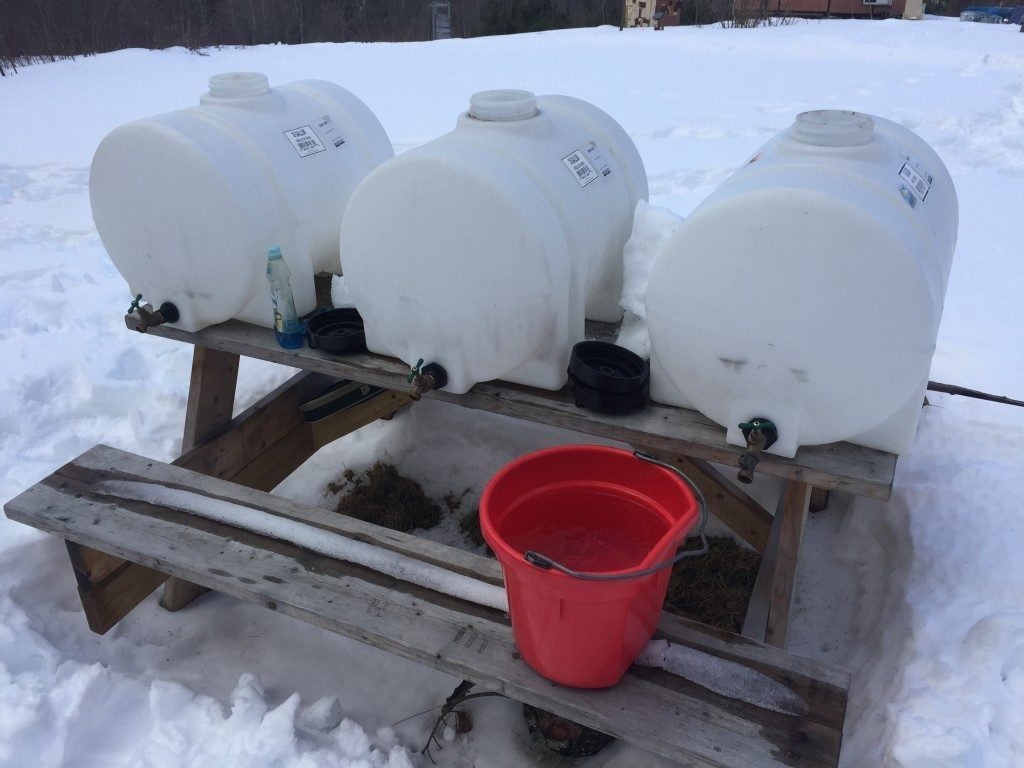
More mistakes made this year, due to scheduling and weather constraints we let ~100 gallons of sap freeze in the tanks. Because my husband filled them too much, a thaw actually pushed a lot of concentrated sap out the top… lessons learned…
The stuff dripping out the top of the tank tastes quite sweet, and it’s fertilizing the lawn.
Fortunately we are also avoided a lot of mistakes we learned about last year. Boiling is much smoother a process now.
Helping?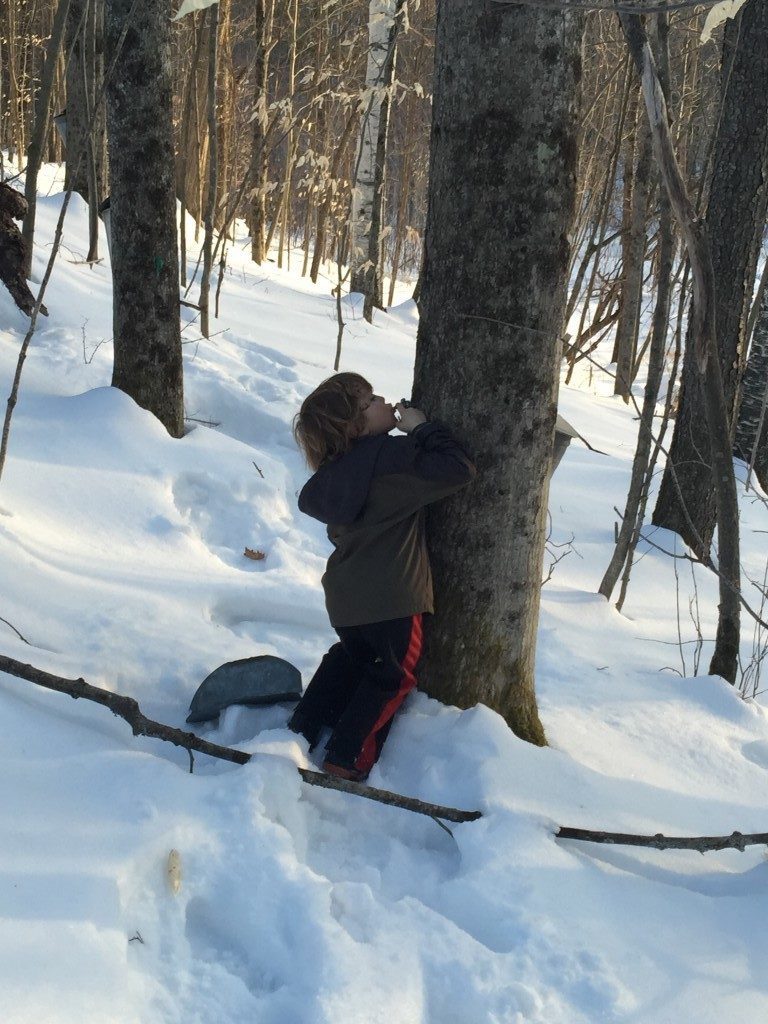
Totally safe, no problem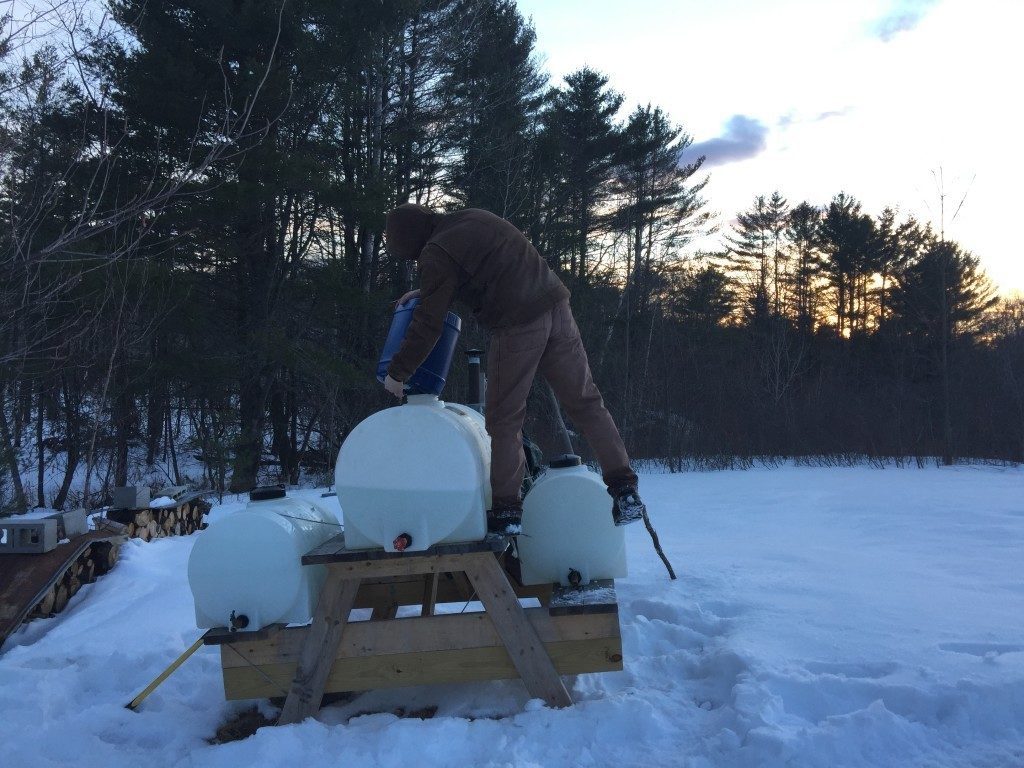
The smell…
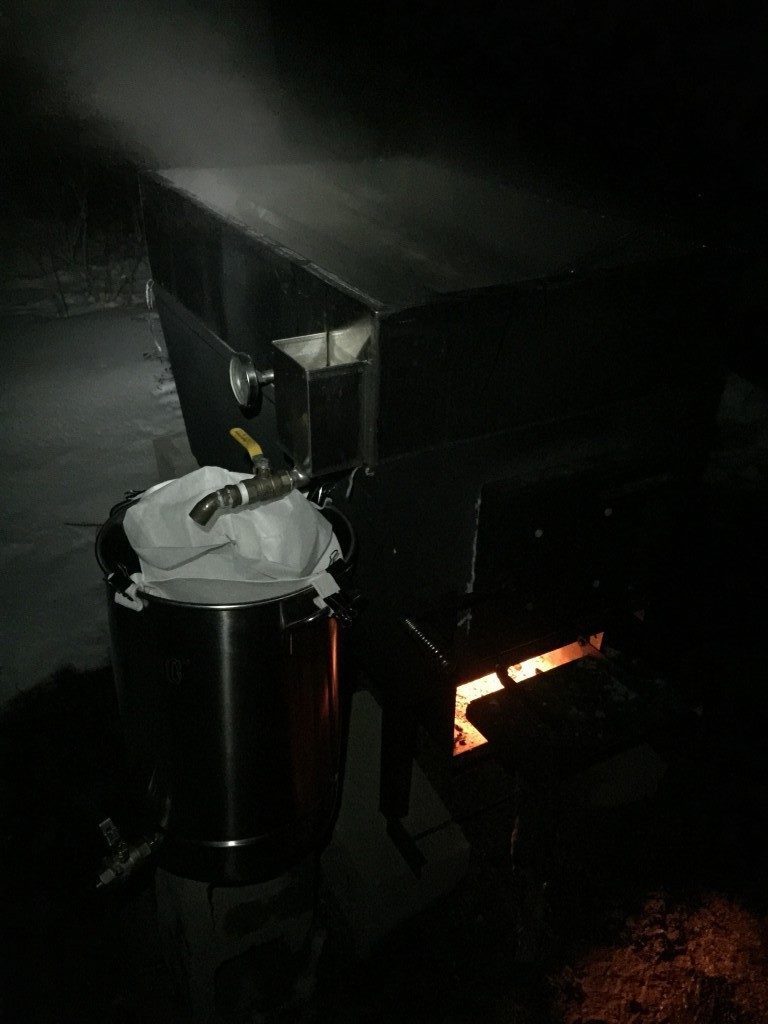
Finishing on the stove
 Not captured in these pictures, my husband carrying 8 gallons of boiling liquid back home at night, on snow and ice, with a thrown back. Having a shed and proper snow handling equipment will make an amazing difference in the years to come.
Not captured in these pictures, my husband carrying 8 gallons of boiling liquid back home at night, on snow and ice, with a thrown back. Having a shed and proper snow handling equipment will make an amazing difference in the years to come.
This year’s production of honey and maple syrup.
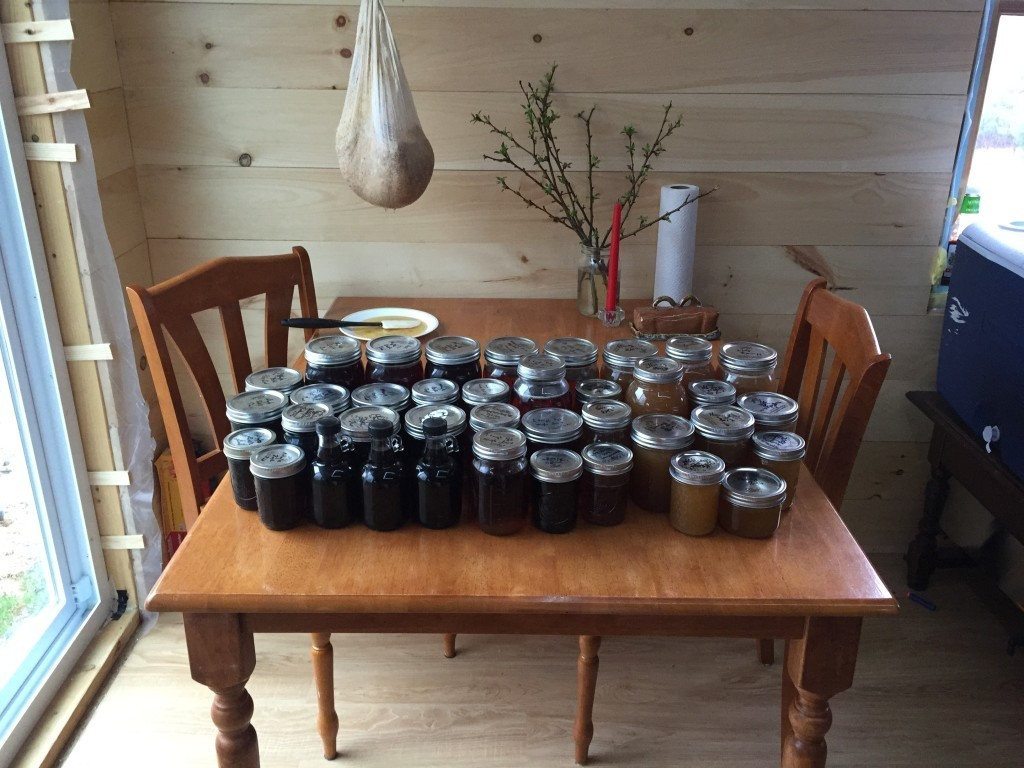
European Trip
In February, my son and I visited family in Belgium and Hungary. I learned to butcher and preserve a whole pig, which was an amazing experience. It is, unfortunately, not a skill I will be applying on our homestead this year as planned, as the baby will be born in early October, when the butchering would need to occur. We will be adding pigs to our homestead in Spring 2019.
House projects
While we were gone in Europe, my husband took advantage of an empty house to finish a wall and add flooring. Working on any projects in the house while living in it is hard. In our tiny space, we have no room to move any furniture or things around and still be able to function normally, unless you spend the majority of your time outside. With a few feet of snow on the ground and freezing temperatures, this is not an option in the winter. Finishing a wall and adding flooring was an epic step to take in our tiny house, and my husband surprised us months ahead of schedule when we returned.
On a sunny day in April, we also added a patio door, a step necessary to finish the shingling on the wall outside.
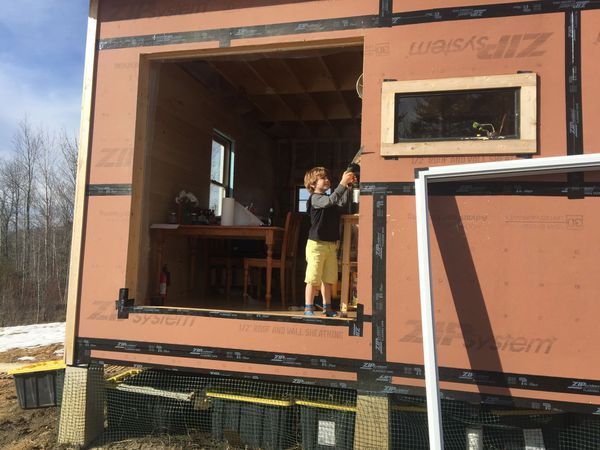
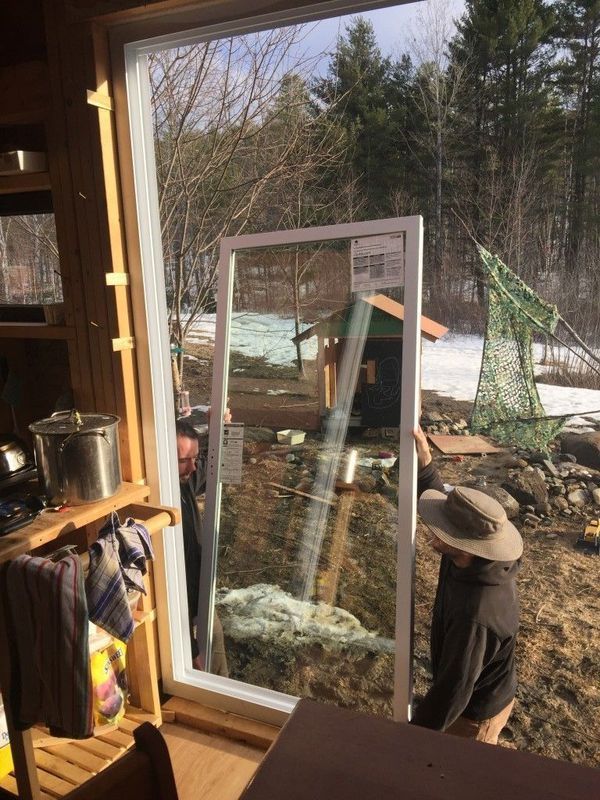
Our house is finally starting to look like a real house. One of our favorite time when building a house is discovering a view. This one is not only the biggest, it is also the one turned towards our land. It was something to discover it. We now get to admire nature, the result of our hard work, and our kid playing, all in one view.

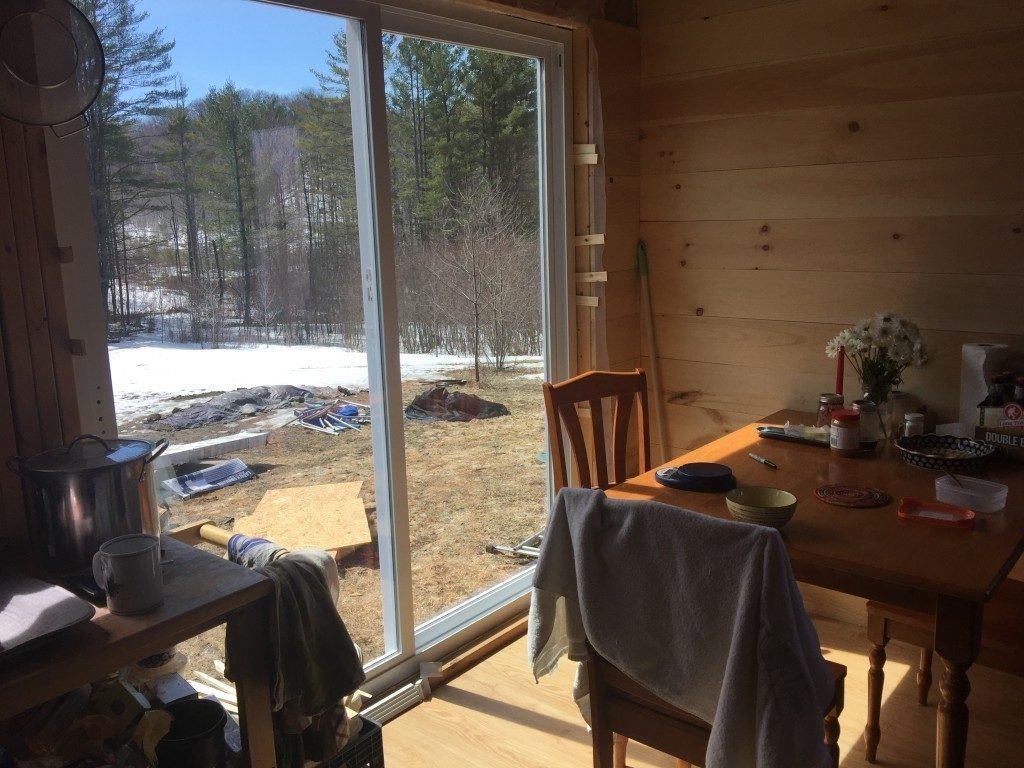
Getting ready for the addition
Plans have been in the makings now for months: we will be adding to the house this spring, in early June. We have the final draft plans for the house, and it will be a similar structure to what we have now, doubling the size of our home. Having a clearer idea of what our living quarters will be has brought a lot of frustration with our current living arrangements. My husband often complains that we can’t grab anything without 10 things falling to the ground. We all seem to gather to the same spot at the same time, and need to dance around each other to not get stuck. Having the plans firmed up in our heads makes it difficult to be satisfied with our current situation. In a little bit over 3 months, we will have so much space… until the baby is born.
Winter sports
One of the many advantages of being a kid in a rural area, with no traffic:
Learning to mend
I haven’t bought new clothes in months. I make so much compromises to live in accordance with my principles that buying clothes is a difficult endeavor. We have access to so much information, and yet, finding information about the factories and work conditions in which a specific product is made is almost impossible. Instead of buying new, I buy my clothes and my son’s at thrift shops, or email my friends and ask for their excess, items they haven’t touched in years.
My friend Sarie gave me some really cool wool sweaters (handmade in the U.S!?, how old is this sweater?) this winter. One of them had some moth damage, but it is such a cool simple sweater, I knew it deserved a second life.I picked up my needles, and after a few hours of going back and forth with some wool yarn, it was in perfect shape again. I gave it another life.
